THE LEAFLET
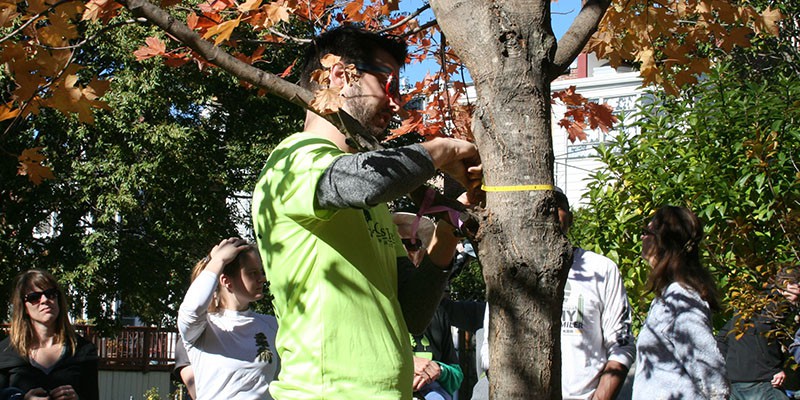
Survival Study Part 1: Species
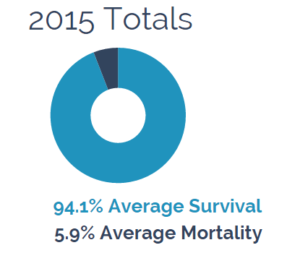 Casey Trees is dedicating to planting tree species that will thrive in D.C.’s urban landscape. But how do we know which species to choose?
Casey Trees is dedicating to planting tree species that will thrive in D.C.’s urban landscape. But how do we know which species to choose?
We certainly rely on the knowledge of experts who work at Casey Trees, but we also listen to what the trees tell us. How do we do that? Each summer we study our trees survival. Last year, four hardworking interns examined over 4,000 trees (a random sample of all the trees Casey Trees has planted since 2002). Their efforts to collect data allows us to track the success of different practices and programs.
So which species did well?
To understand this, we must first look at overall survival. As an organization we have a survival rate of 94.1, which is great! It’s above the national average for urban areas, this means volunteers and crew members are doing an awesome job of properly planting and stewarding our trees.
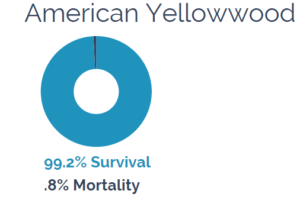 Of all 127 species surveyed this year, the American Yellowwood had the highest survival rate. It also holds the award asthe rarest tree in eastern North America but that hasn’t stopped it from taking a strong hold in our city. This tree is popular among our private plantings due to its spectacular clusters of fragrant white flowers.
Of all 127 species surveyed this year, the American Yellowwood had the highest survival rate. It also holds the award asthe rarest tree in eastern North America but that hasn’t stopped it from taking a strong hold in our city. This tree is popular among our private plantings due to its spectacular clusters of fragrant white flowers.
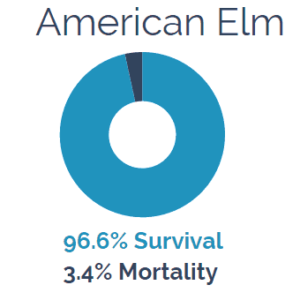 The American Elm, the species Casey Trees has planted the most, did superbly. Of 816 Elms surveyed, 788 survived. Elms are incredibly resilient and well adapted to DCs harsh urban environment. We were not surprised to see them thriving. The American Elm is an important part of DCs heritage, they are the trees that originally lined the National Mall and we’re glad to know these historically significant trees will continue to shade our city.
The American Elm, the species Casey Trees has planted the most, did superbly. Of 816 Elms surveyed, 788 survived. Elms are incredibly resilient and well adapted to DCs harsh urban environment. We were not surprised to see them thriving. The American Elm is an important part of DCs heritage, they are the trees that originally lined the National Mall and we’re glad to know these historically significant trees will continue to shade our city.
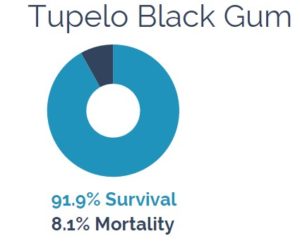 Even though the Black Gum has the lowest survival rate, we are happy to see how well it’s done amidst some tough circumstances. This extremely slow growing tree is notoriously difficult to transplant and has a reputation for being unsuitable as a fall planted tree. We will be digging deeper to see if this high mortality is due to the season which the tree is planted.
Even though the Black Gum has the lowest survival rate, we are happy to see how well it’s done amidst some tough circumstances. This extremely slow growing tree is notoriously difficult to transplant and has a reputation for being unsuitable as a fall planted tree. We will be digging deeper to see if this high mortality is due to the season which the tree is planted.
Make sure to check out the next installment of the Survival Study’s three part series where we will reveal more findings! Like the trees you see here? Plant them in your own yards through our Tree Rebate program!